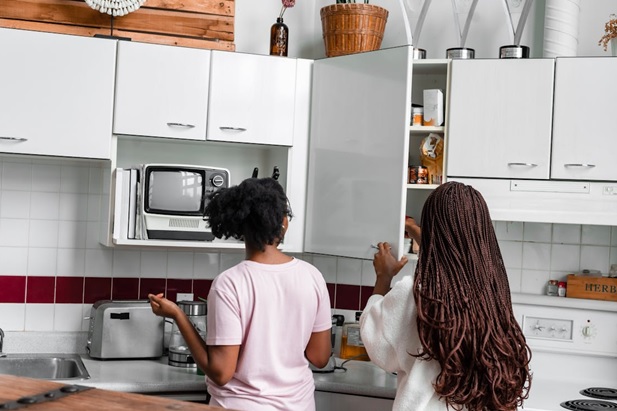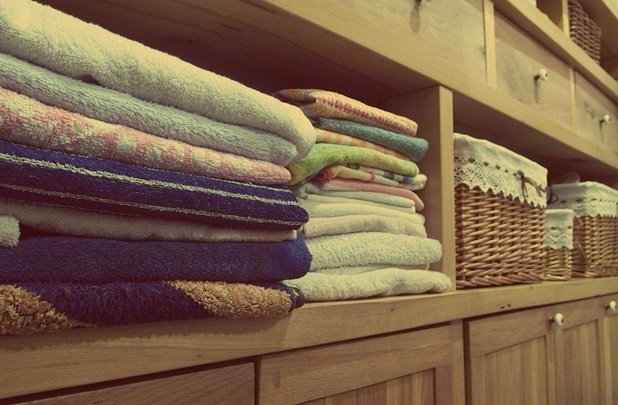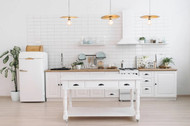Humidity: The Key to Prevent Mold in Your Home
Jan 6th 2025
Mold and mildew are persistent nuisances in many homes, thriving in damp, warm, and poorly ventilated environments. They can cause health problems, structural damage, and unpleasant odors.
What most people do not know is that controlling humidity levels in your home can prevent the growth of mold and mildew. Developing an understanding of how mold develops can help you take the appropriate preventative measures to create a healthier, mold-free home.
Mold and Humidity
Mold is a type of fungi that thrives in environments with oxygen, moisture, and temperatures between 40°F and 100°F. It feeds on organic materials like wood, fabric, food, and paint, producing airborne spores that can trigger allergies, respiratory issues, or worse, depending on the type. Some molds produce mycotoxins and are hazardous and require immediate attention.
Mold and humidity are closely interconnected, as mold thrives in damp environments with high humidity levels. Mold spores, which are naturally present in the air, require moisture to grow and multiply. When indoor humidity exceeds 60%, conditions become ideal for mold development, particularly on organic materials like wood, paper, and fabrics.
High humidity creates condensation on surfaces, such as walls, windows, and ceilings. Over time, these damp surfaces can provide the perfect breeding ground for mold colonies. Spaces like basements, bathrooms, and kitchens, where moisture levels are frequently elevated, are particularly susceptible.
Beyond structural damage, elevated humidity and resulting mold growth pose health risks. Mold releases spores and mycotoxins into the air, which can trigger allergies, asthma, respiratory issues, and illness in some individuals. Prolonged exposure can lead to more severe health problems, autoimmune issues, and disease..
Preventing Mold in High-Moisture Areas
To prevent mold growth, it's crucial to control indoor humidity. Using dehumidifiers, improving ventilation, and repairing leaks promptly can help maintain ideal humidity levels (30-50%). Regularly monitoring and managing humidity not only protects your home but also ensures a healthier living environment free from the risks associated with mold.
Bathroom
The bathroom is one of the most common places for mold growth due to its frequent exposure to water and high humidity levels. To minimize mold in this space, always use an exhaust fan–vented to expel the moist air outside of the home–during and after showers, running it for at least 30 minutes post-shower to reduce humidity.
It’s also best to leave the shower door or curtain open after use to allow the area to dry. Regularly clean grout and caulk where mold often appears, and use a mold solution to clean the entire bathroom.
For the sink, wipe down countertops and sinks after use and clean with a mold solution as well to prevent water from pooling and attracting mold spores. You should also hang towels to dry immediately after use and wash them regularly. Avoid leaving bath mats damp on the floor; wash and air them frequently.

Kitchen
Kitchens are another hotspot for mold, as cooking, boiling water, and washing dishes generate significant humidity. To prevent mold, use a range hood or kitchen vent while cooking and leave it on for a few minutes afterward.
Leave coffee makers, dishwashers, and microwaves open after use to allow them to dry. Clean them regularly to prevent mold buildup. But when it comes to food, properly seal food to avoid mold development in the fridge. Discard moldy items promptly and minimize the time the refrigerator door is left open.
Laundry Room
Laundry rooms, especially those with front-loading washing machines, are prime mold zones. If you don’t want mold in your laundry machines, keep the washer door open between cycles to let it air out. Wipe down the rubber seal where moisture tends to linger.
Ensure the dryer is vented properly to expel moisture outside. Clean lint traps regularly to maintain efficiency.
General Mold Prevention Strategies
Maintaining the right humidity level is essential in preventing mold. Aim for 30-50% humidity. You can use a hygrometer to check the levels indoors, and then use the following strategies to bring the level to an ideal rate.
- Dehumidifiers
Use these devices in humid regions or during summer months to control excess moisture in the air.
- HVAC Maintenance
Regularly service air conditioners and heating systems to ensure efficient humidity control. Make sure to change filters every 3 months to ensure dust and particulates are being removed efficiently from the indoor air.
- Window Care
Condensation on windows can lead to mold growth, so it’s best to clean window frames and sills regularly to remove moisture. Ensure windows are properly sealed to prevent leaks.
- Proper Cleaning and Drying
Avoid leaving dirty dishes in the sink for extended periods. Rinse them immediately or air-dry them to prevent food residue from fostering mold growth.
- Floors and Carpets
Keep carpets and rugs dry, especially in areas prone to spills. Clean and dry water spills promptly to prevent mold from forming underneath.
- Storage
Store items in dry areas and avoid overcrowding, which can trap moisture. Use moisture-absorbing products like silica gel packs or charcoal bags in closed storage spaces.
- Refrigerator
Even though fridges are cold, mold can still develop due to temperature fluctuations and moisture. Keep the door closed as much as possible to prevent warm air from entering. Regularly inspect and remove moldy food items.
Use the Right Solution
Incorporating a mold solution into your cleaning routine, alongside effective humidity control, is essential for preventing mold growth in your home. Using EC3 Mold Solution Concentrate as part of your cleaning strategy is a great way to control and prevent mold growth. Here's how you can achieve this:
Dilution and Application
Use a non-toxic solution concentrate, such as EC3 Mold Solution Concentrate. Dilute the concentrate according to the manufacturer's instructions. Once prepared, apply the solution using a spray bottle, mister, or fogger to treat larger areas.
Target Mold Prone Areas
Focus on both hard surfaces (like countertops, floors, and furniture) and soft surfaces (such as drapes, carpets, and upholstery). Regular application helps decrease mold spores and bacteria that naturally float in the air and settle on these surfaces.
Do It Regularly
Incorporate this treatment into your regular cleaning schedule to maintain low indoor mold counts. For the best results, follow up with HEPA vacuuming to physically remove any debris.
Control Humidity and Prevent Mold
Preventing mold and mildew requires vigilance and proactive measures. You can minimize mold growth in your home, and using EC3 Mold Solution Concentrate goes a long way in ensuring a clean, healthy living environment for you and your family.




